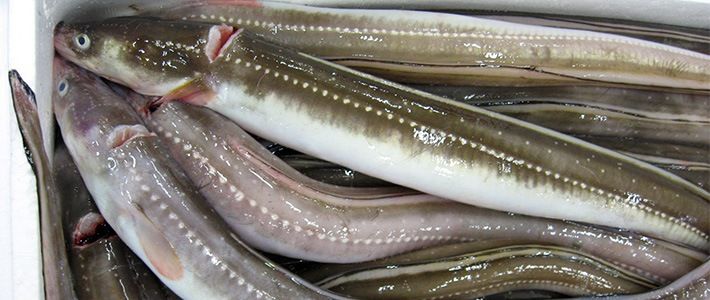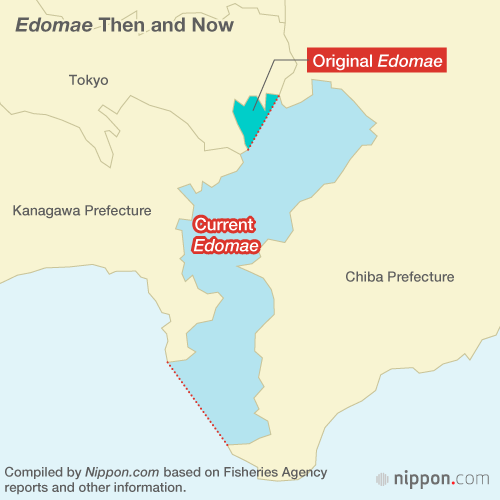
Fishing Tokyo’s Waters Since Samurai Times
Society- English
- 日本語
- 简体字
- 繁體字
- Français
- Español
- العربية
- Русский
Many Tokyo sushi and tempura restaurants declare themselves to be Edomae. The original meaning of the term refers to the waters that were in front (mae) of Edo Castle (now Tokyo Imperial Palace). Formerly, there was an inlet right next to Edo Castle and the fresh fish landed there were served directly to the tables of the shōgun’s family and other samurai.
However, as the population increased in Edo, so did reclamation and development of the coast. In the last days of the Tokugawa shogunate in the nineteenth century, batteries were built near Shinagawa as coastal defense. In the Meiji era (1868–1912), Tsukishima and Kachidoki were built on landfill using earth and sand dredged during construction to ensure sufficient depth in Tokyo Bay. Toyosu, now crowded with high-rise condominiums, was built using rubble from the 1923 Great Kantō earthquake. As the map shows, a substantial portion of the original Edomae sea area has been filled meaning almost no fishing is done there now. The reason fish can still be referred to as Edomae is because the area of sea so defined has expanded.
A Fisheries Agency subcommittee established in 2004 discussed the definition of Edomae and settled that it would cover the whole of Tokyo Bay so any fresh seafood caught there could be classed as Edomae.

According to the Tokyo Fisheries Division, in 2013 the landing volume of metropolis fisheries cooperatives in Tokyo Bay was 422 tonnes. The majority of the catches were Japanese seabass and asari clams. While catches of whitespotted conger eel were not large, it is a representative Edomae food. Cruise trips in Tokyo Bay where passengers on pleasure boats can enjoy freshly prepared tempura using eel and other Edomae fish are popular.
Production Volumes and Values of Fisheries Cooperatives in Tokyo Bay (2013)
| Volume (kg) | Value (¥ million) | |
|---|---|---|
| Mackerel | 484 | 0.05 |
| Japanese horse mackerel | 499 | 0.15 |
| Righteye flounders | 28,710 | 22.62 |
| Japanese seabass | 131,369 | 95.37 |
| Whitespotted conger eels | 11,949 | 20.82 |
| Gizzard shad | 1,044 | 0.02 |
| Asari clams | 206,635 | 62.30 |
| Other | 41,999 | 25.51 |
| otal | 422,689 | 226.84 |
Gizzard shad is also known as kohada and is pickled in vinegar and used as a sushi topping. This shiny silver fish is an essential part of Edomae sushi.
Compiled by Nippon.com based on documents published by Tokyo Fisheries Division.
Nori seaweed is cultivated on the Chiba Prefecture side of Tokyo Bay and red sea bream and Japanese tiger prawns are caught at the exit of Tokyo Bay close to the open sea. Over by Yokohama, a small amount of shako mantis shrimp is caught.
Many shops near the fishing ports in the city and two prefectures that face onto Tokyo Bay serve set meals using Edomae fish. Being an industrial area, large tankers pass through Tokyo Bay, but with the rich fishery resources available, the food culture of the fishing communities continues to be handed down through the generations.
(Translated from Japanese. Banner photo: Whitespotted conger eel. © Jiji.)